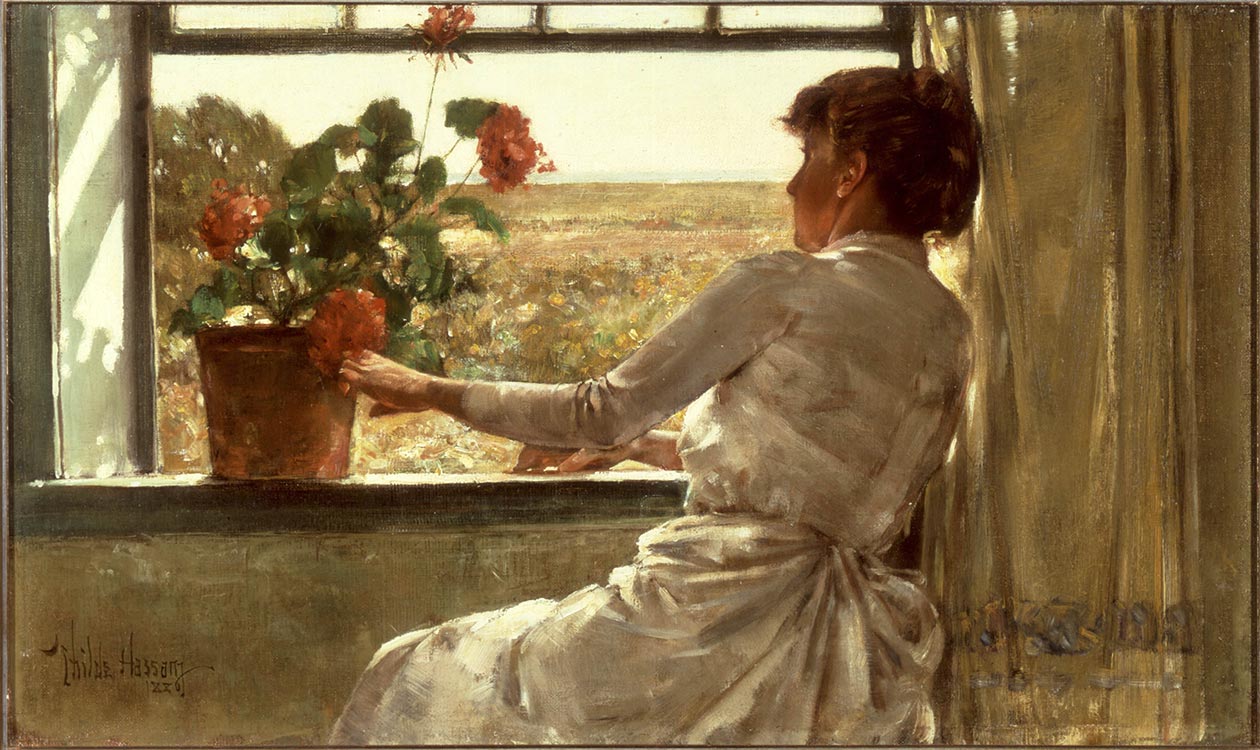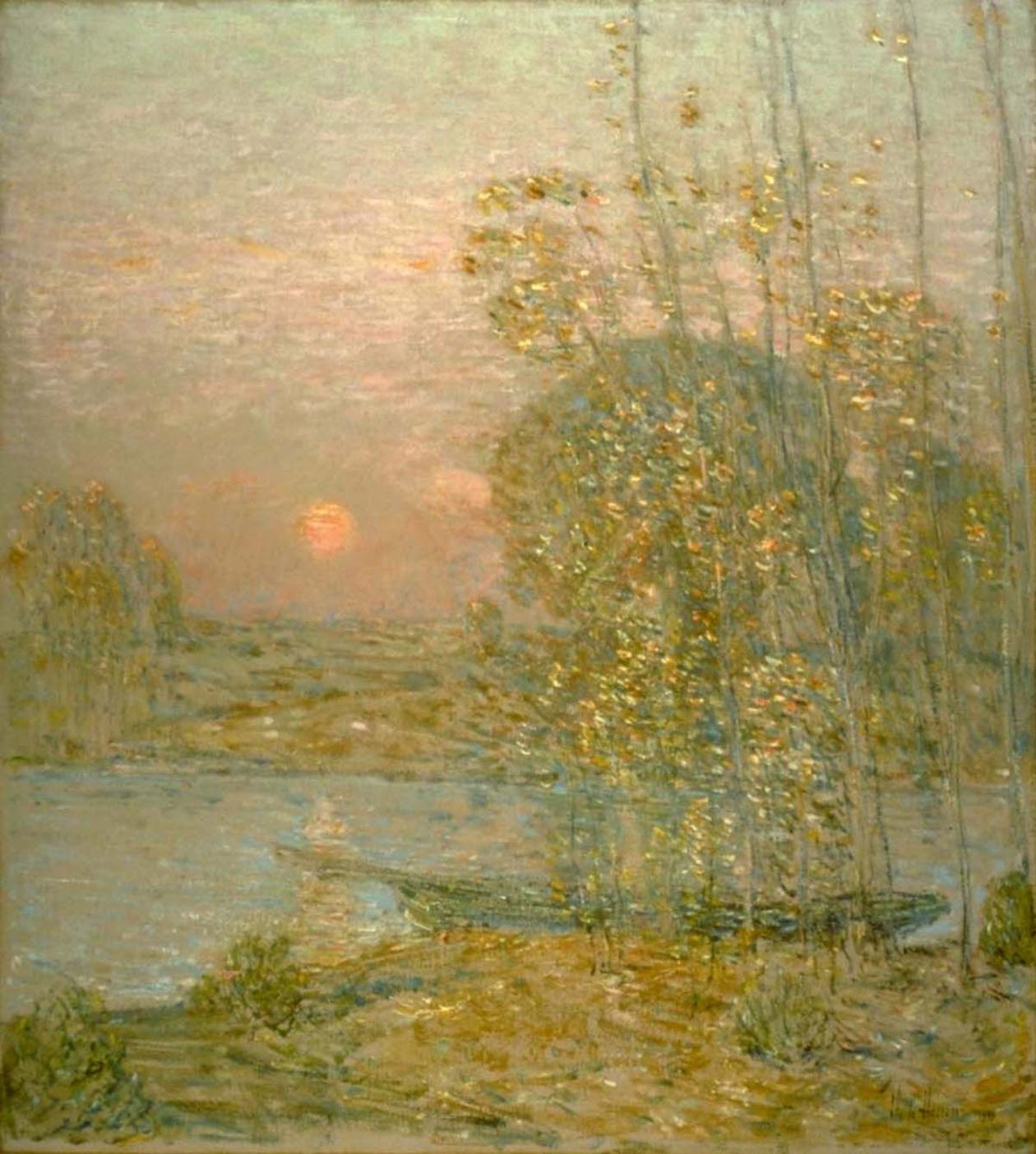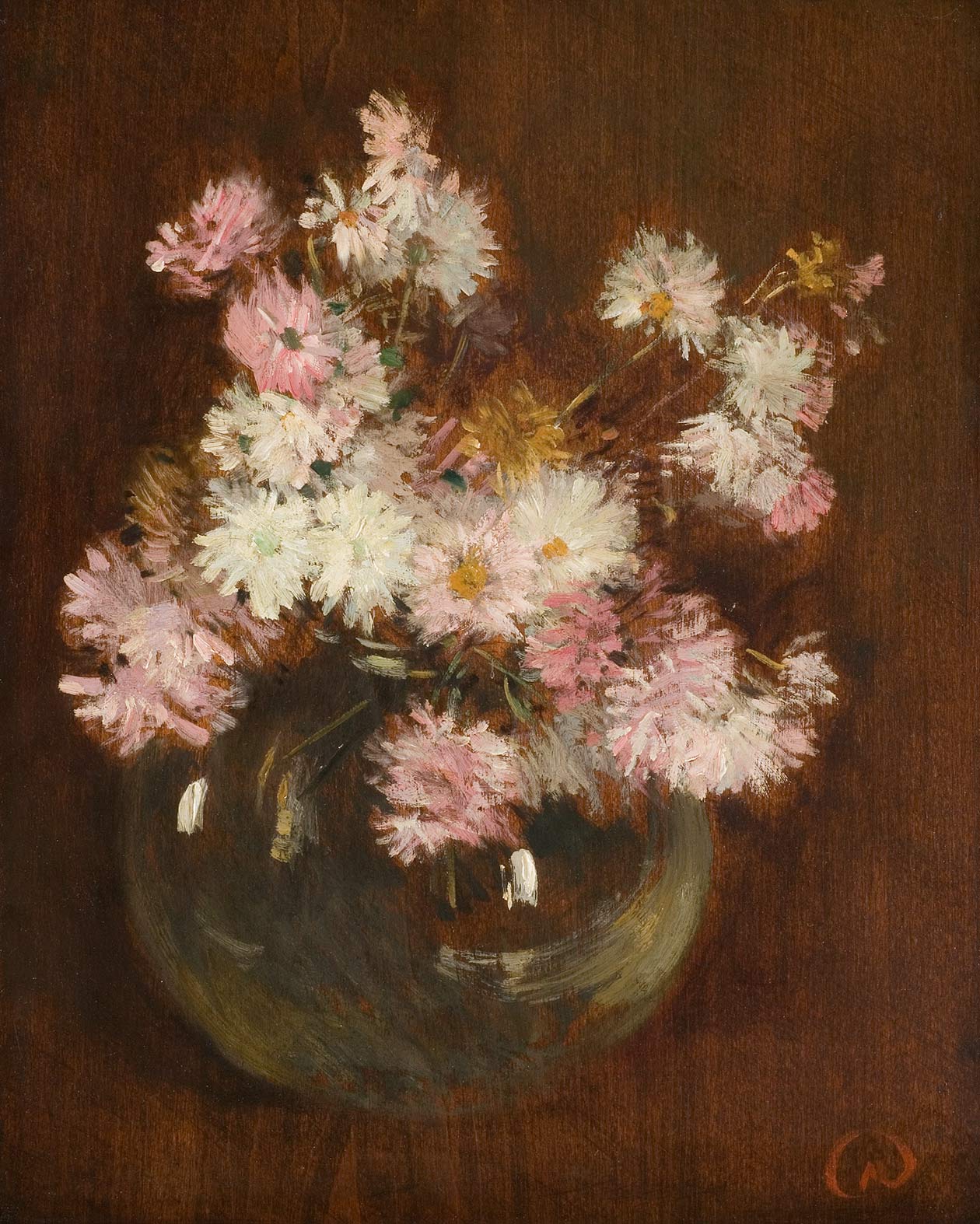Collections
In Situ: The Painted Panels
- The Museum will be closed Sunday, April 9 in observance of Easter.
Childe Hassam (1859 – 1935)
Floral Still Life
Some time after his arrival in Old Lyme in 1903, Childe Hassam decorated this panel in the dining room with a floral still life. Tucked between the left side of the fireplace and the busy door to the back kitchen, the narrow strip of wood had to be carved at the top to fit snugly around the curving edge of the mantel. This must have been a challenging panel to paint, not only because of its odd shape but because Henry Rankin Poore’s mural The Fox Chase over the fireplace is a major attraction, as is the brighter marsh scene by Beal just to the left. Hassam, who had brought the bright light, vibrant color, and loose brushwork of Impressionism to Old Lyme, may have decided not to compete with Poore and Beal but rather complement their panels with a painting uncharacteristic for him in color and composition, although not in technique.
Flowers are an important subject in Hassam’s art, from colorful gardens and flower shops in France, to the sun drenched island gardens that surrounded his dear friend the poet Cecelia Thaxter’s home on the Isles of Shoals off the coast of New Hampshire. His paintings such as the Museum’s Summer Evening featured potted flowers and fresh bouquets to enliven rooms in New York and Cos Cob. On this panel, however, he not only jammed some lanky flowers into a skinny vase but limited their colors to earthy tones that nearly blend into the background, which he appears to have painted to look like wood. The tall glass vase floats rather than sits on anything within its niche – his good friend and colleague Willard Metcalf does the same with a spherical vase of cosmos around the corner.
A “baked apple” painting, with trademark Hassam touches.
Uncharacteristically Characteristic
While Hassam’s and his followers at Old Lyme liked to tease Henry Ward Ranger and the other Tonalists who founded the art colony at the Griswold House about their dark and syrupy “baked apple” art, Hassam created just such an effect on this panel. Perhaps this was his tongue-in-cheek nod to the art movement that he was largely responsible for quashing, or at least modifying, once he arrived in Old Lyme.
Unusual as this piece is for Hassam, there are nonetheless some characteristic touches. He highlighted the vase with just a few deft touches of white and indicated individual flowers in the bouquet by his careful placement of darks and lights. The flowers themselves are formed by a host of short parallel strokes that give them texture and form. In time, his sparkling watercolors of flower-filled gardens, would become a benchmark for the landscape painters of the era.




